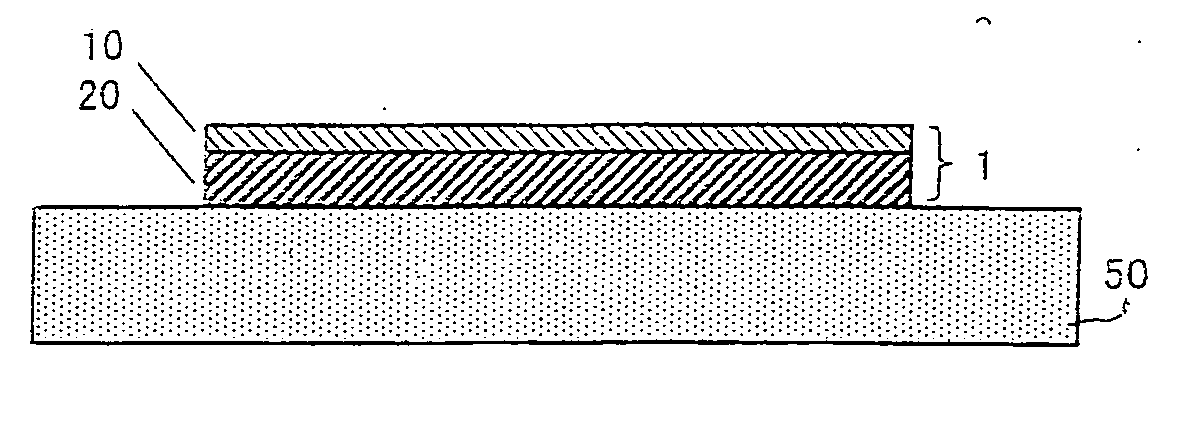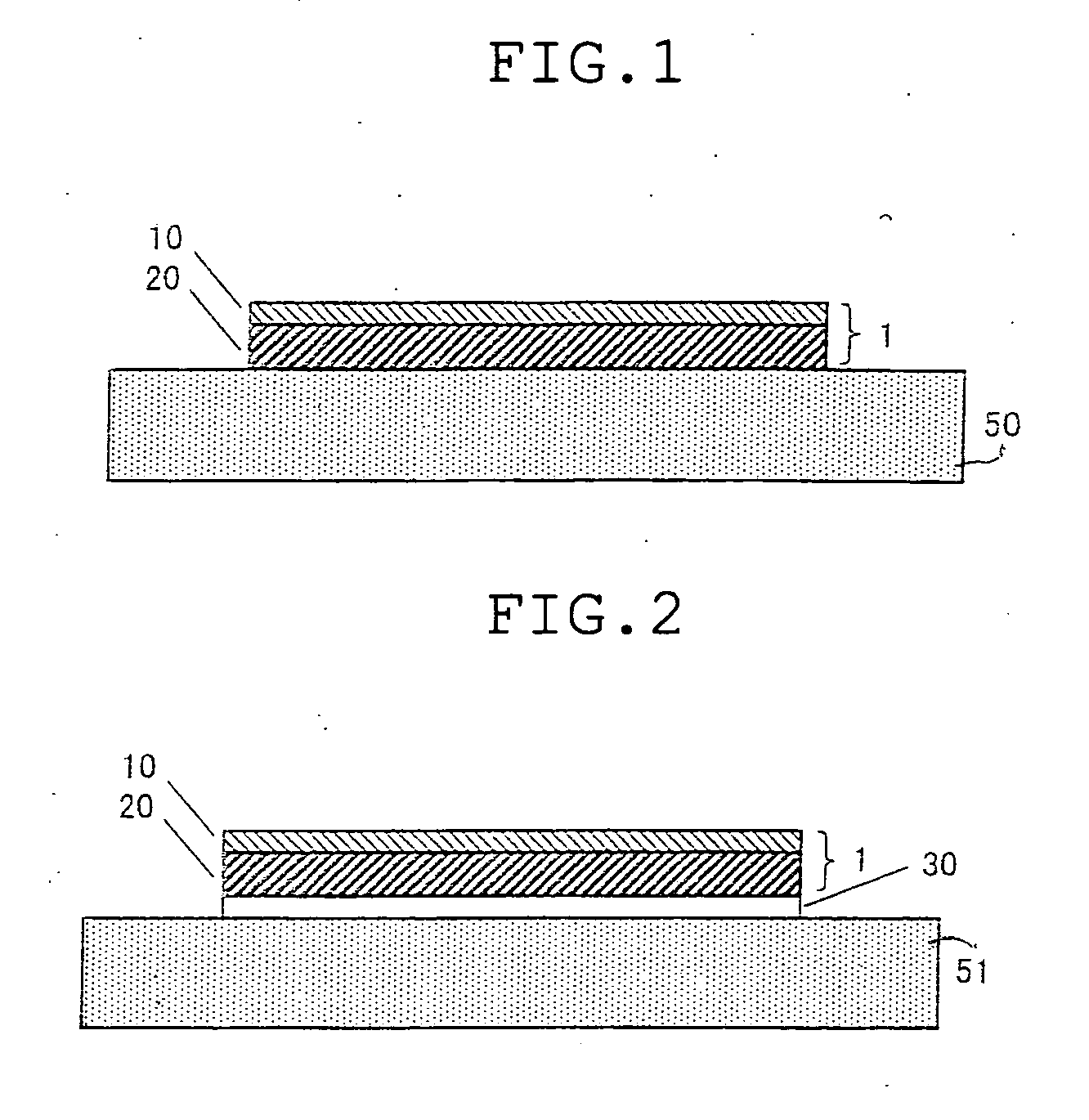Transparent conductive film and transparent conductive base material utilizing the same
a technology of transparent conductive base material and transparent conductive film, which is applied in the direction of conductive layers on insulating supports, non-metal conductors, instruments, etc., can solve the problems of insufficient work function and difficult control, and achieve low surface resistance and high work function.
- Summary
- Abstract
- Description
- Claims
- Application Information
AI Technical Summary
Benefits of technology
Problems solved by technology
Method used
Image
Examples
embodiments
[0037] In accordance with FIGS. 1 and 2, the structures of embodiments will be described.
[0038]FIG. 1 is a sectional view showing the fundamental structure of the transparent conductive base material used in Embodiments 1-6. A transparent conductive film 1 is fabricated which has the lamination structure including a transparent conductive thin film 20 and a transparent conductive thin film 10 composed of gallium, indium, and oxygen, laminated in turn on a glass substrate (7059 substrate by Corning Inc.) 50. The transparent conductive thin films 10 and 20 are deposited through a direct-current magnetron sputtering method by using an SPF-530H sputtering device made by ANELVA Corporation. The transparent conductive thin films 10 and 20 are also deposited by adjusting the time so that preset film thicknesses are reached, using a gas mixture of argon and oxygen, at an output of 200 W under the conditions of a gas pressure of 0.5 Pa and a proportion of an oxygen flow rate of 1.5-2.5%.
[0...
embodiments 1-3
[0043] The transparent conductive thin film 10 is formed as an amorphous film with a thickness of 10 nm, composed of gallium, indium, and oxygen, and three kinds of compositions are provided so that gallium contents are 49.1, 50, and 65 atom %, respectively, with respect to all metallic atoms. The transparent conductive thin film 20 is formed as an In2O3-1 wt % WO3 amorphous film with a thickness of 150 nm.
[0044] As seen from Embodiments 1-3, when the gallium content of the transparent conductive thin film 10 is in the range of 49.1 to 65 atom %, the transparent conductive film 1 with a work function of 5.1 eV or more and a surface resistance of 50 Ω / □ or less can be attained.
embodiments 4-6
[0045] The transparent conductive thin film 10 is formed as an amorphous film with a thickness of 10 nm, composed of gallium, indium, and oxygen, and only one kind of composition is provided so that the gallium content is 50 atom % with respect to all metallic atoms. The transparent conductive thin film 20 is formed as one selected from among an In2O3-10 wt % SnO2 amorphous film, an In2O3-10 wt % ZnO amorphous film, and an In2O3-1 wt % WO3-0.5 wt % ZnO amorphous film, each with a thickness of 150 nm.
[0046] As seen from Embodiments 4-6, when the transparent conductive thin film 10 with a thickness of 10 nm and a gallium content of 50 atom % is combined with the transparent conductive thin film 20 formed as one selected from among the In2O3-10 wt % SnO2 amorphous film, the In2O3-10 wt % ZnO amorphous film, and the In2O3-1 wt % WO3-0.5 wt % ZnO amorphous film, each with a thickness of 150 nm, the transparent conductive film 1 with a work function of 5.1 eV or more and a surface resist...
PUM
| Property | Measurement | Unit |
|---|---|---|
| thickness | aaaaa | aaaaa |
| thickness | aaaaa | aaaaa |
| resistivity | aaaaa | aaaaa |
Abstract
Description
Claims
Application Information
 Login to View More
Login to View More - R&D
- Intellectual Property
- Life Sciences
- Materials
- Tech Scout
- Unparalleled Data Quality
- Higher Quality Content
- 60% Fewer Hallucinations
Browse by: Latest US Patents, China's latest patents, Technical Efficacy Thesaurus, Application Domain, Technology Topic, Popular Technical Reports.
© 2025 PatSnap. All rights reserved.Legal|Privacy policy|Modern Slavery Act Transparency Statement|Sitemap|About US| Contact US: help@patsnap.com


